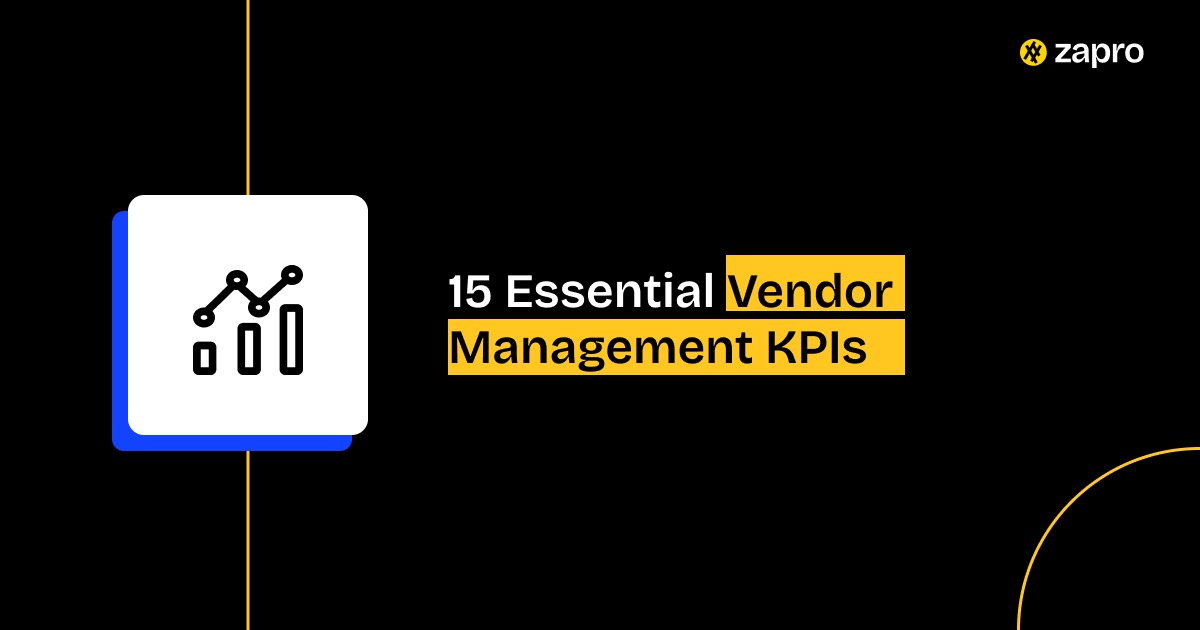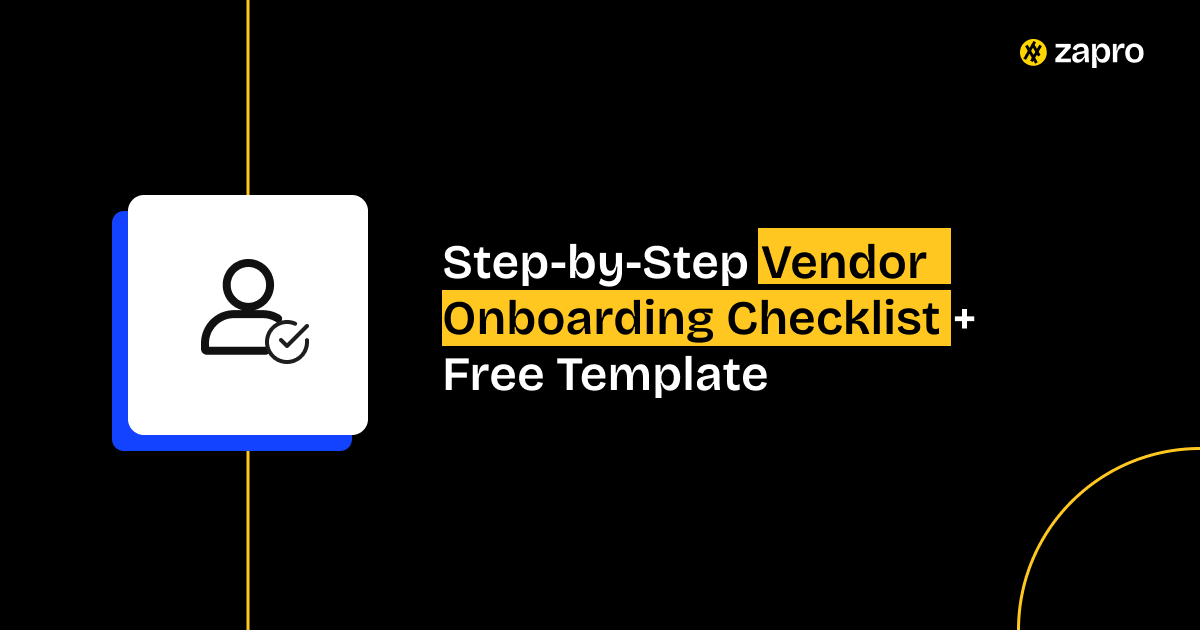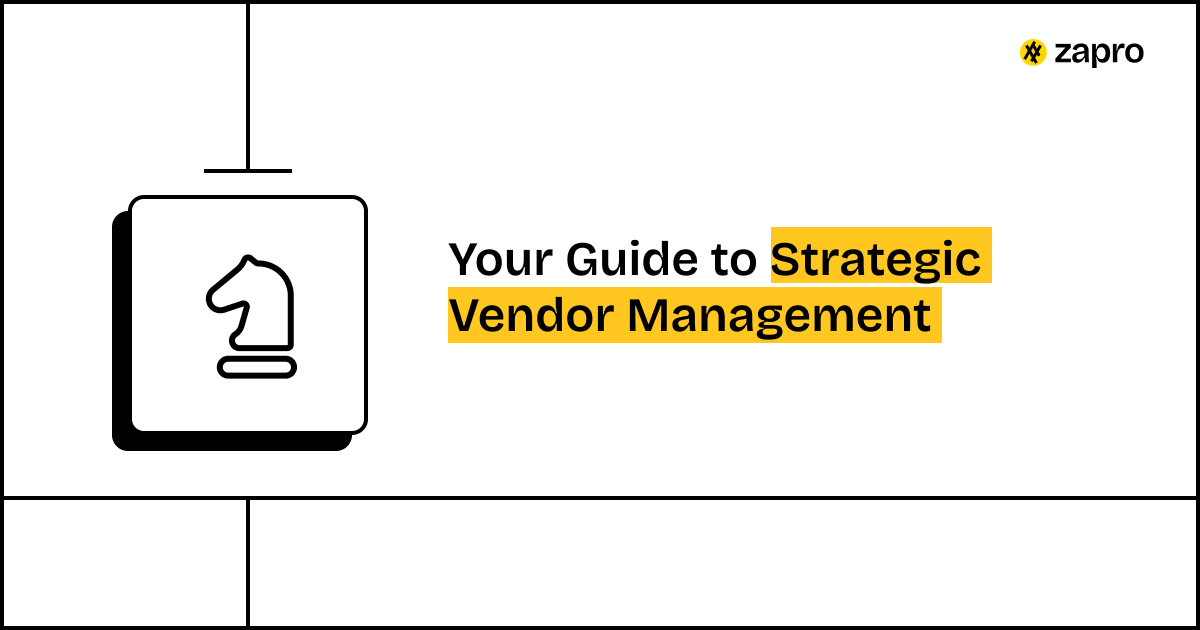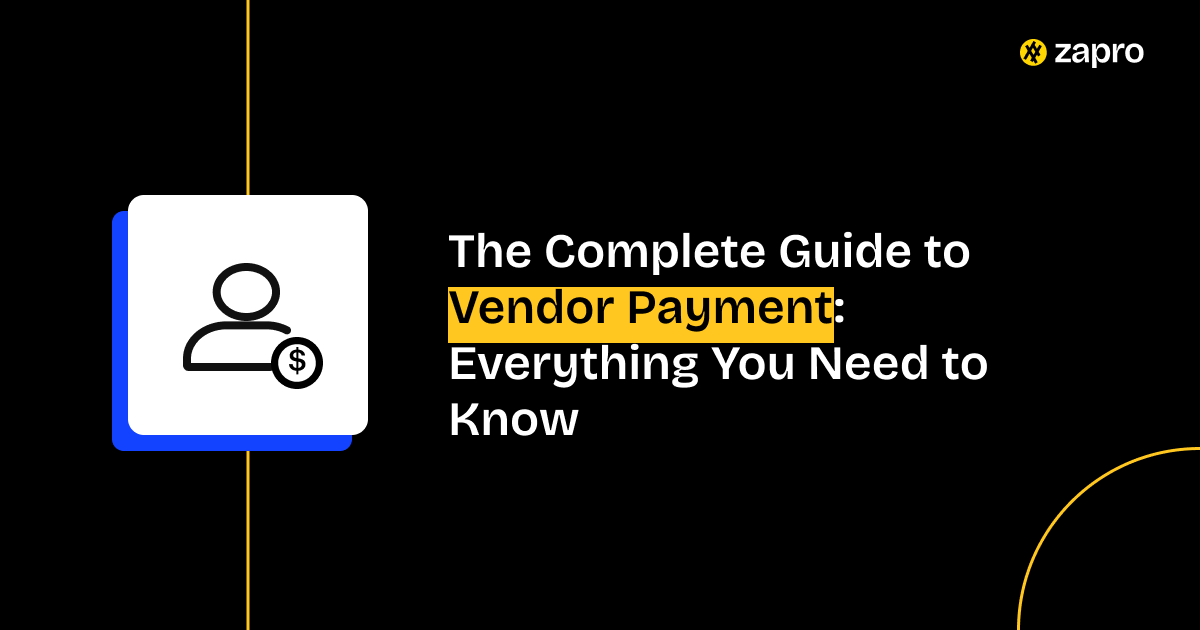What are vendor management KPIs?
Vendor management KPIs are measurable indicators that track how well a vendor is performing against agreed expectations. They cover different aspects of the relationship, cost, delivery, quality, compliance, risk, and even innovation.
Think of them as a contract in action: while SLAs (Service Level Agreements) define what should happen, KPIs measure whether it’s actually happening. For example:
- On-time delivery rate shows if products arrive when promised.
- Cost savings achieved measures whether a vendor is helping reduce procurement spend.
- Defect rate tells you about product or service quality.
KPIs turn vague vendor performance into measurable outcomes.
What is the difference between KPIs and metrics?
It’s very common to confuse metrics with KPIs. The difference lies in focus and relevance:
- Metrics are any measurable data point. For example, “number of deliveries in a month” or “emails exchanged with vendors.”
- KPIs are the critical few metrics that directly tie to business objectives. For example, “percentage of deliveries on time” is actually a KPI because it is directly linked to efficiency and customer satisfaction.
To put it simply:
- Every KPI is a metric.
- But not every metric is a KPI.
This distinction is very important because it will ensure that you don’t drown in data, but instead track the metrics that truly impact your procurement goals.
Why KPIs are critical for vendor management
The absence of KPIs makes vendor management operate as an unguided process. The following reasons explain their importance:
1. Clear performance evaluation
The measurement system provides vendors with a clear understanding of their performance evaluation criteria.
2. Alignment with business strategy
The use of KPIs creates vendor activity alignment with procurement strategies and business targets.
3. Early problem detection
The system detects problems at an early stage because it monitors delivery performance and defect rates.
4. Transparent review discussions
The use of common KPIs enables organizations to conduct performance review discussions based on transparent measurement criteria.
5. Measurable ROI generation
The vendor management process generates measurable ROI because it connects vendor performance to specific cost reductions and risk mitigation and quality enhancement benefits which demonstrate value to leadership.
Why vendor management KPIs matter
Vendor KPIs function as more than dashboard indicators because they create direct effects on vendor value delivery and procurement strategy performance.
1. Better ROI from vendor relationships
Vendors function as business partners who provide more value than basic supply services and products. The tracking of KPIs including cost savings and negotiated discounts and innovation contributions helps organizations measure the actual value they receive from their vendor relationships.
The efficiency improvements vendors deliver through logistics optimization and shipping speedup result in decreased operational expenses which generate increased return on investment. The absence of KPIs makes these valuable vendor contributions impossible to detect.
2. Revealing operational inefficiencies and cost reduction opportunities
The vendor management process reveals its operational inefficiencies through KPI measurements. The metrics of lead time efficiency and purchase order accuracy help organizations identify workflow bottlenecks and cost accumulation points.
The ability to monitor vendor performance enables procurement teams to transition from emergency response to strategic process enhancement activities. The procure to pay process becomes more efficient through faster procurement cycles while manual work decreases and cost savings become visible throughout the entire process.
3. Improved quality, delivery, and compliance
The quality of service delivered to end customers depends directly on how well vendors perform their duties. The quality and reliability standards agreed between vendors and customers become achievable through KPI measurements of defect rates and on-time delivery and SLA compliance.
The implementation of robust KPI tracking systems enables organizations to preserve stable service delivery while reducing their exposure to regulatory non-compliance risks. The critical nature of these KPIs emerges when healthcare and food retail organizations experience a single compliance failure because it results in both financial losses and damage to their reputation.
4. Strengthening risk management
The three main sources of vendor risks include financial instability and supply chain disruptions and insufficient disaster preparedness capabilities. Organizations can detect early warning signs of risk through KPI measurement of risk exposure index and business continuity readiness. Businesses that use this forward-thinking method can create multiple supplier networks and modify their contracts and establish backup plans to minimize their dependence on single vendors and protect their operational stability.
How to Establish Effective Vendor KPIs
The process of establishing KPIs requires more than selecting random numbers from a list. The effectiveness of KPIs depends on their ability to support business objectives while matching procurement plans and remaining practical for execution.
1. Identify your business goals
The initial step requires organizations to move past procurement operations to understand their broader business targets. The organization has established specific targets for this current year:
- The organization aims to decrease costs by 10% as its main objective.
- The organization aims to enter new markets as part of its expansion strategy.
- The organization aims to improve product quality standards and prepare for regulatory compliance requirements.
The established vendor KPIs should directly support the organization’s established goals. The business goal of cost reduction makes “cost savings achieved” and “vendor discount utilization” the most important KPIs.
2. Link procurement targets to business objectives
The process of KPI development requires linking procurement targets to specific business objectives. The process begins with business priority definition followed by procurement objective development.
For example:
- The procurement cycle time reduction objective requires the lead time efficiency KPI to measure its success.
- The vendor satisfaction index serves as a KPI to measure vendor collaboration improvements.
- The procurement team must enhance compliance through the achievement of SLA and regulatory compliance rate targets.
The organization benefits from procurement activities that support its strategic objectives through this approach.
3. Match KPIs to vendor performance standards
The KPIs need to match the performance standards which vendors have agreed to through their contracts and service level agreements. The KPI should track delivery performance at 95% on-time rates because this matches the SLA delivery promise. The system provides vendors with clear performance targets while ensuring both parties maintain mutual understanding of their performance goals.
The process of defining KPIs with vendor participation leads to better results because it generates their support during performance evaluation periods.
4. Focus on essential KPIs
The selection of KPIs should focus on essential metrics which bring maximum value to the organization.
The practice of monitoring numerous KPIs simultaneously represents a widespread error in performance management systems. The numerous performance indicators create unnecessary noise which diverts staff from essential metrics that produce actual results.
The “less but better” principle should guide your selection of KPIs.
- The organization should monitor between 8 to 10 essential KPIs.
- The organization should focus on KPIs which directly impact cost performance and quality standards and delivery schedules and risk management and compliance requirements.
- The organization should review these performance indicators every quarter to verify their ongoing value.
The selection of essential KPIs enables better reporting and helps vendors and internal teams understand their performance targets.
Top vendor management KPIs to track
The assessment of vendor performance requires only a limited number of specific metrics which surpass all other potential measurement options. The KPIs which organizations track for vendor performance consist of financial metrics and delivery metrics and quality metrics and relationship metrics and risk management metrics.
The first two essential KPIs for assessment are financial performance and delivery performance.
A. Financial performance KPIs
1. Cost savings achieved
The measurement of vendor partnership savings compares current expenses to previous spending levels and market reference points.
The calculation for this KPI requires (Baseline Cost – Actual Cost) ÷ Baseline Cost × 100.
The vendor helped your organization reduce service expenses from $1,000,000 to $900,000 which represents a 10% cost savings.
The financial value that vendors deliver to your organization becomes evident through this metric. The tracking of savings should begin at the time of contract negotiation and extend through the renewal process.
2. Return on investment (ROI)
The financial performance of vendor relationships becomes evident through this metric.
The calculation for ROI requires you to divide Net Benefits from Vendor by Total Vendor Costs before multiplying by 100.
The vendor relationship generates a 50% return on investment because the $300,000 worth of savings and efficiency improvements exceed the $200,000 investment.
The financial performance of vendors should exceed basic contract compliance because it demonstrates their ability to generate profits for your organization.
3. Vendor discounts & negotiation impact
The system monitors vendor discount achievements from negotiations to determine their effect on total cost savings.
The formula calculates vendor discount value as a percentage of total contract worth by using (Discount Value Secured ÷ Total Contract Value) × 100.
A $500,000 contract benefits from a 10% discount when you secure a $50,000 reduction. The vendor discount represents a 10% reduction in the total contract value.
The negotiation success rate and vendor partnership strength become apparent through this metric.
B. Delivery & fulfillment KPIs
1. On-time delivery rate
The percentage of orders which reach customers before or at their scheduled delivery dates.
The formula to calculate this metric involves dividing the number of on-time orders by the total number of orders then multiplying by 100.
The delivery performance rate reaches 95% when 950 out of 1,000 orders meet their scheduled delivery times.
Your supply chain maintains operational continuity because delivery consistency prevents production delays. The delivery performance of top vendors exceeds 95% on-time delivery according to industry benchmarks.
2. Order accuracy
The system evaluates order delivery precision by checking for correct product quantities and types and precise specifications.
The formula calculates order accuracy by dividing accurate orders by total orders then multiplying by 100.
The accuracy rate reaches 97.5% because 1,170 out of 1,200 orders were delivered without errors.
The accuracy rate of 97.5% leads to reduced costs from rework and returns and decreased delays in downstream operations.
3. Lead time efficiency
The system measures vendor performance by tracking the time span from order placement to delivery completion.
The calculation for this metric requires dividing the total lead time by the total number of orders.
The three orders completed in 10 days and 12 days and 8 days resulted in an average lead time of 10 days.
The combination of brief and stable lead times enables better planning and enhanced customer contentment. The monitoring of lead time patterns across multiple quarters enables organizations to detect potential vendor capacity issues before they become major problems.
C. Quality & compliance KPIs
1. Product/service defect rate
The percentage of defective products or services which fail to meet quality requirements serves as this metric.
The formula to calculate this metric involves dividing defective units by total units delivered then multiplying by 100.
The defect rate calculation for this example equals 3% because 150 defective units exist among 5,000 total units delivered.
The high number of defective products leads to increased expenses and production delays and damages vendor credibility.
The tracking of both minor and critical defects as separate categories provides better understanding of the data.
2. SLA & contract compliance
The system monitors vendors to verify their performance against Service Level Agreements (SLAs) and contractual obligations.
The formula calculates compliance by dividing the number of compliant deliverables by total deliverables then multiplying by 100.
The vendor achieved 92% compliance because they delivered 92 out of 100 deliverables that met SLA requirements.
Your business needs this metric to defend against vendor underperformance while maintaining vendor accountability standards.
3. Regulatory compliance score
The assessment of vendor compliance with industry rules and safety protocols and legal obligations occurs through this metric.
The assessment of compliance status relies on audit results and certification documents and standardized checklists.
The vendor’s compliance score depends on their ISO certification status and their success rate in 95% of their audits.
The failure to comply with regulations leads to financial penalties and damage to reputation and operational interruptions.
D. Vendor relationship KPIs
1. Vendor satisfaction index
The system evaluates vendor contentment with your organization through client service delivery.
The assessment of vendor satisfaction occurs through survey-based rating systems which evaluate communication quality and collaboration and payment reliability.
The vendor evaluates your organization with an overall score of 8.5 out of 10.
When vendors maintain positive relationships with your organization they will give priority to your orders and provide improved terms.
2. Responsiveness to issues
The system evaluates vendor performance regarding their speed and effectiveness when handling emerging problems.
The formula calculates this metric by averaging the duration needed to solve problems in days or hours.
The vendor handles 90% of all issues within a 48-hour timeframe.
The length of time vendors need to solve problems affects both production operations and customer service delivery.
3. Innovation contribution
The system monitors vendor innovation activities through their implementation of process enhancements and cost-cutting suggestions and technological advancements.
The assessment of vendor-driven innovations uses two methods: quantitative measurement of adopted innovations and qualitative evaluation during review processes.
Vendors who actively participate in innovation development create enduring strategic value for your organization instead of providing temporary supply benefits.
E. Risk management KPIs
1. Vendor financial stability
The assessment determines if a vendor maintains sufficient financial stability to become a dependable long-term business partner.
The assessment of vendor financial stability uses credit ratings and financial statement analysis together with debt ratios and Altman Z-score calculations.
Financial instability in vendors creates supply chain risks that threaten business continuity.
2. Risk exposure index
The system evaluates the total degree of risk which a vendor introduces into your supply chain operations.
The risk exposure index uses weighted scoring to evaluate financial stability and operational performance and geopolitical factors and compliance standards.
The vendor faces a 70/100 risk exposure rating because of geopolitical instability while the local vendor maintains a 20/100 risk level.
The system enables organizations to determine which risks need immediate attention and which vendors should be diversified.
3. Business continuity & disaster readiness
The assessment evaluates vendors’ readiness to maintain operations through unexpected situations which include natural disasters and cyberattacks and labor strikes.
The assessment relies on disaster recovery plans and backup facilities and response drills for its evaluation.
Your business faces expensive disruptions when vendors lack effective continuity plans.
Track Success with the #1 Vendor Management KPI Dashboard

Best practices for tracking vendor KPIs
The value of KPIs depends on regular tracking and open sharing of results. The following established methods have proven successful for KPI tracking:
1. Use a centralized vendor management system (VMS)
A vendor management system combines vendor contracts with performance data and compliance records into one unified platform. The system provides a unified information source which enhances the reliability of KPI tracking.
Real-time dashboards within your system choice should replace traditional static reports according to your needs.
2. Automate performance data collection
The process of manual data entry becomes obsolete through automation which provides instant access to data. The e-procurement tools automatically record delivery schedules and verify invoice precision and system compliance.
The system integration with ERP or accounting platforms enables smooth data acquisition.
3. Use vendor scorecards to provide transparent performance tracking
Scorecards transform KPI information into easy-to-understand visual displays that vendors can easily comprehend. The traffic-light system (green, yellow, red) enables users to identify performance gaps in performance through instant visual assessment.
The sharing of scorecards during quarterly meetings helps vendors work together with your organization.
4. Schedule regular performance reviews
The process of regular performance assessments enables fast problem resolution while maintaining vendor alignment with organizational targets. The standard review frequency includes quarterly assessments but critical vendors need evaluations every month.
The complete understanding of vendors requires finance and operations teams to join procurement during review sessions.
Tools and software for vendor KPI tracking
The vendor management software offer multiple tools to monitor vendor KPIs while performing automated tasks which generate immediate insights for enhanced procurement management and compliance results.
1. Zapro
The AI-powered VMS solution enables organizations to handle vendor onboarding and risk management and procurement workflow automation through its complete system. The system unifies all data while streamlining approval processes and generating performance and compliance data-driven insights for better results.
- The system enables automated vendor onboarding and approval processes and maintains continuous communication.
- The system includes a self-service vendor portal which connects to a single centralized data storage system.
- The system provides real-time alert functionality through performance and risk dashboards.
- The system integrates with ERP systems and CRM platforms and procurement management systems.
2. SAP Ariba
The cloud-based platform supports vendor management through its complete lifecycle stages which include onboarding and risk assessment and continuous performance evaluation. The platform focuses on creating transparent systems that help organizations maintain compliance standards while fostering teamwork.
- The system enables automated supplier onboarding and qualification processes.
- The system allows users to create customizable scorecards for tracking KPI performance.
- The system integrates risk assessment capabilities with audit log functionality.
- The system maintains a single location for storing contracts and certifications and communication materials.
3. Gatekeeper
The AI-based platform connects vendor KPIs to contracts and risks and spends data for complete performance monitoring.
- The system provides automated tracking for compliance and credential management.
- The system provides real-time performance and risk monitoring through its dashboard interface.
- The system enables users to track vendor performance through scorecards which also display historical assessment data.
4. Spendflo
The procurement software system helps organizations optimize their SaaS and vendor expenses while managing contracts and monitoring vendor performance.
- The system enables automated procurement processes which start with intake and end with purchase order generation.
- The system provides a single platform to track all contracts and performance data.
- The system analyzes spending data to reveal potential cost-saving areas.
- The system includes automated features for compliance and risk management.
5. Planergy
The procure-to-pay and accounts payable automation platform of Planergy features advanced real-time dashboards and approval workflow management capabilities.
Vendor onboarding and management
- The system enables automated approval processes which generate complete audit trails.
- The system provides immediate access to spend data and performance metrics through its real-time reporting system.
- The system enables users to create budget forecasts and handle purchase order management.
Benefits of automating KPI reporting
1. Improved accuracy
The system eliminates human mistakes while delivering dependable performance information.
2. Real-time visibility
The system updates dashboards automatically when new data becomes available which enables teams to take immediate action.
3. Time savings
The process of manual KPI report collection and compilation becomes shorter because of automation.
4. Better decision-making
The procurement leaders use real-time data to make better decisions about vendor negotiations and strategy development.
5. Enhanced transparency
The automated scorecards and reports enable vendors and stakeholders to access uniform performance.
Common mistakes to avoid when tracking KPIs
A well-designed KPI framework becomes ineffective when organizations fail to execute it properly. The following three errors should be avoided by procurement teams when implementing KPI tracking systems.
1. Setting too many KPIs
Multiple KPI tracking leads to confusion which weakens organizational focus. Your business should focus on 8-10 essential metrics which drive both organizational targets and vendor partnership success.
2. The use of metrics which do not apply to current situations or have become outdated
The usefulness of certain metrics decreases as time passes. The procurement objectives from last year no longer match the current procurement goals which makes certain KPIs less relevant. Organizations should conduct periodic assessments of their KPIs to verify their alignment with present business requirements.
3. The KPI development process should include active participation from vendors
The implementation of KPIs through unilateral decisions should be avoided. The involvement of vendors during KPI definition and assessment processes leads to better vendor commitment toward achieving these targets. The absence of vendor involvement leads to potential resistance and decreased chances of discovering valuable improvement opportunities.
Vendor KPI dashboard example
The procurement team can use KPI dashboards to monitor vendor performance through a fast overview of cost data and quality and delivery and risk and compliance metrics. The dashboard provides a single view that combines all reports into one platform which enables teams to identify patterns and monitor development and conduct vendor performance assessment discussions.
Here’s a sample framework you can adapt:
| KPI Category | KPI Name | Formula / Measurement | Target Benchmark | Frequency of Review | Current Score |
| Financial Performance | Cost Savings Achieved | (Baseline – Actual) ÷ Baseline × 100 | 8–10% annually | Quarterly | 9% (On Track) |
| Delivery & Fulfillment | On-Time Delivery Rate | (Orders on Time ÷ Total Orders) × 100 | 95%+ | Monthly | 92% (Needs Work) |
| Quality & Compliance | Defect Rate | (Defective Units ÷ Total Units) × 100 | < 2% | Quarterly | 3% (At Risk) |
| Vendor Relationship | Responsiveness to Issues | Avg. time to resolve (hours/days) | < 48 hours | Quarterly | 36 hours (Good) |
| Risk Management | Business Continuity Plan | Vendor has active plan (Yes/No, % readiness) | 100% readiness required | Annual | 80% (Gap) |
How to use it:
- Red/yellow/green scoring (traffic-light system) makes performance gaps easy to spot.
- Procurement teams can drill deeper into problem areas during reviews.
- Sharing the dashboard with vendors builds accountability and collaboration.
Turning KPIs into a competitive advantage with Zapro
The implementation of Zapro enables organizations to transform their KPIs into performance-enhancing tools that create market leadership.
The process of monitoring vendor KPIs enables organizations to develop better vendor relationships which become more transparent and profitable. The process of manual KPI management becomes challenging because it produces numerous errors and creates excessive workloads.
Zapro serves as the solution for this problem. The AI-powered vendor management system Zapro unifies vendor information while performing automated KPI monitoring and providing instant performance data. The system supports procurement teams to transition from basic monitoring to active optimization through its complete workflow management from onboarding to compliance and performance evaluation.

Start Smarter with Zapro
Automate onboarding, track risks instantly, and stay ahead of compliance—all in one platform.
Frequently Asked Questions
What are the most important vendor management KPIs?
The most critical KPIs include cost savings, on-time delivery rate, defect rate, SLA compliance, vendor responsiveness, and risk management indicators.
How do I measure vendor performance effectively?
Use a mix of financial, delivery, quality, and risk KPIs, tracked through a centralized VMS and reviewed regularly with vendors.
What’s the difference between KPIs and metrics in vendor management?
Metrics are any measurable data points, while KPIs are the specific metrics tied directly to business goals.
How often should vendor KPIs be reviewed?
Most organizations review KPIs quarterly, with monthly reviews for critical or high-risk vendors.
Which software is best for tracking vendor KPIs?
Tools like Zapro, SAP Ariba, Gatekeeper, Spendflo, and Planergy offer automated KPI tracking and real-time dashboards.What is a vendor scorecard, and how does it relate to KPIs?
A vendor scorecard is a reporting tool that summarizes KPI results, making performance transparent and easy to compare across vendors.
Don’t miss our weekly updates
We’ll email you 1-3 times per week—and never share your information.

 Healthcare
Healthcare Financial Services
Financial Services Technology
Technology Venture Capitalist
Venture Capitalist Chief Procurement Officer
Chief Procurement Officer Chief Financial Officer
Chief Financial Officer




